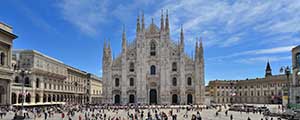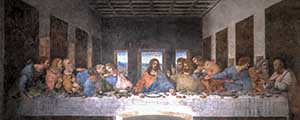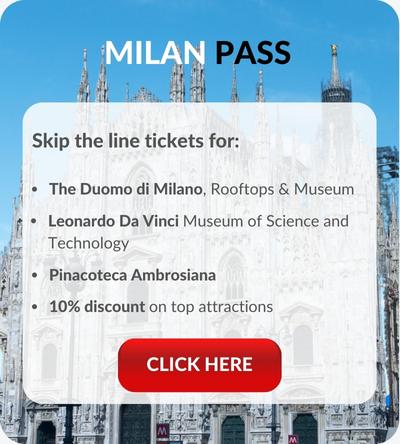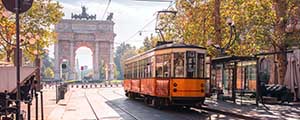
Museum of Science and Technology
Museo Nazionale Scienza e Tecnologia Leonardo da Vinci Milan

The Museo Nazionale Scienza e Tecnologia Leonardo da Vinci in Milan is the largest science and technology museum in Italy and one of the most important in Europe. Book tickets for the Leonardo da Vinci Museum.
Info & Tickets Leonardo da Vinci Museum |
|
| Location | Via San Vittore, 21, 20123 Milano (near the Basilica of Sant'Ambrogio). With the metro get off at the San Ambrogio stop (line 2). |
| Tickets |
|
| Opening hours |
|
Museo Nazionale Scienza e Tecnologia Leonardo da Vinci
The Museo Nazionale Scienza e Tecnologia Leonardo da Vinci in Milan is the largest science and technology museum in Italy and one of the most important in Europe. Located in the heart of the city, near the Basilica of Sant'Ambrogio, the museum offers a comprehensive exploration of human ingenuity and innovation. The museum is housed in the former monastery of San Vittore al Corpo, a historic building dating back to the 16th century. This monastery has served various purposes over the centuries, including a hospital and military headquarters. After being badly damaged during World War II, it was restored in 1947 and transformed into a museum dedicated to the evolution of science and technology
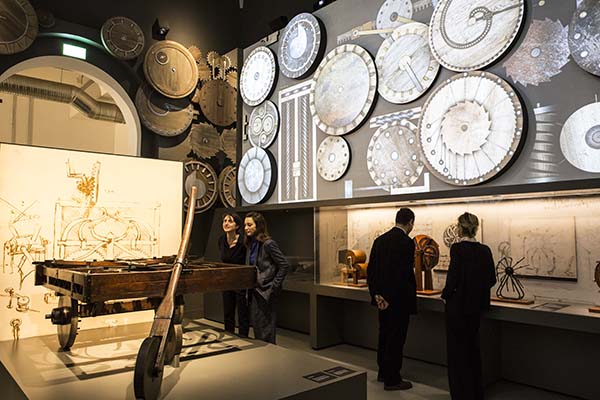 Museo Nazionale Scienza e Tecnologia Leonardo da Vinci
Museo Nazionale Scienza e Tecnologia Leonardo da Vinci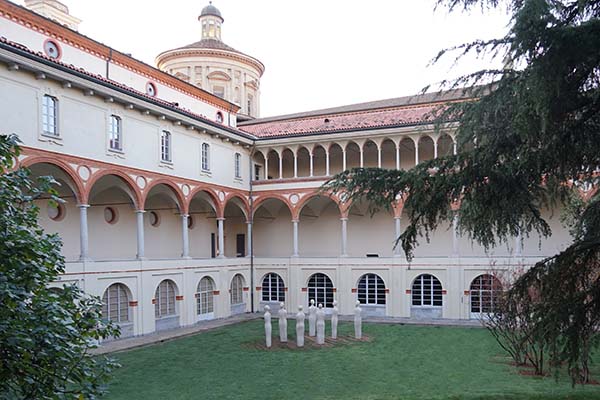 The museum is housed in an old monastery
The museum is housed in an old monasteryThe Science Museum Collection
The Science Museum is huge, with a collection of over 21,000 objects, and you can easily spend a whole day here. Some of the museum's main permanent collections include:
Transportation Section
The Transport Section is divided into four sections: air, rail, water and the Enrico Toti-S-506 submarine. The air transport section features a variety of aircraft, including a replica of the 1909 Farman and an original Macchi MC 205 V from World War II. The railway section, housed in a pavilion from the 1906 Expo, displays vehicles from the 19th and 20th centuries, with a special focus on Lombardy's historic means of public transport. The water transport section features the bridge deck of the transatlantic liner Conte Biancamano and the training ship Ebe, launched in 1921. A special highlight is the submarine Enrico Toti-S-506, the first submarine built in Italy after the Second World War, which has been part of the museum collection since 2005 and is open to visitors.
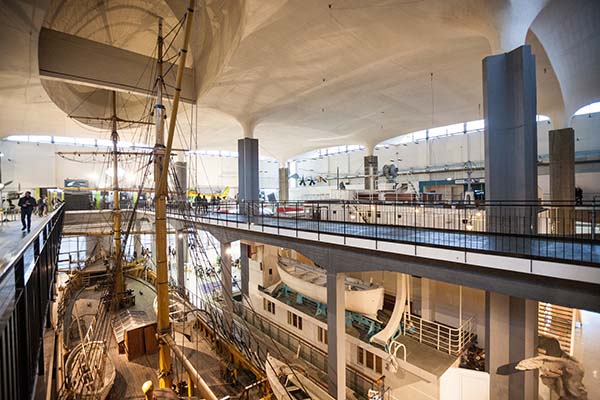
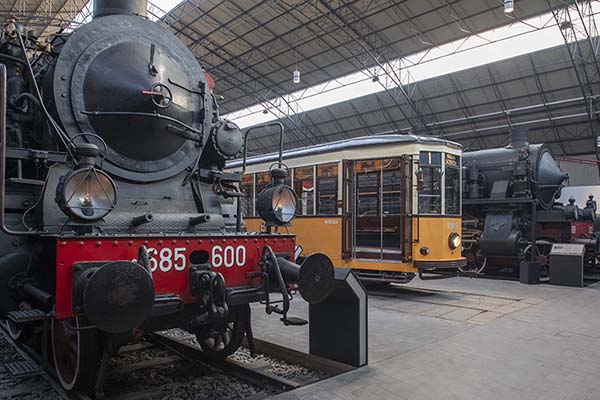
Energy Section
The Energy Section focuses on energy sources and technologies. A striking feature is the 1895 'Regina Margherita' thermal power station, which offers a glimpse into early industrial energy generation. There is also a section dedicated to the oil industry and petrochemicals, where visitors can learn about the processes and technologies involved in the extraction and processing of oil.
Le Nuove Gallerie Leonardo da Vinci
One of the most prominent exhibitions is 'Le Nuove Gallerie Leonardo da Vinci', the largest permanent exhibition in the world dedicated to Leonardo da Vinci as an engineer and humanist. Opened in December 2019, this exhibition covers 1,300 square meters and displays more than 170 objects, including historical models, works of art, ancient manuscripts and fourteen frescoes and paintings. Visitors are taken on a journey through Leonardo’s life and work, beginning in Florence in the 15th century and continuing with his time in Milan under the rule of the Sforza. The exhibition highlights his contributions to warfare, manufacturing processes, flight techniques, waterways and architecture. Multimedia installations and projections bring his ideas and designs to life, giving visitors an in-depth insight into his multifaceted genius.
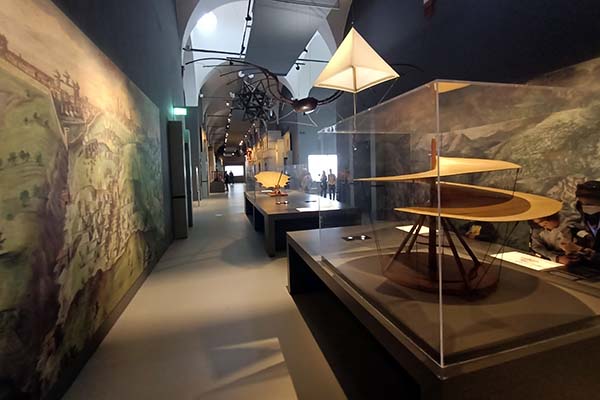 Le Nuove Gallerie Leonardo da Vinci
Le Nuove Gallerie Leonardo da Vinci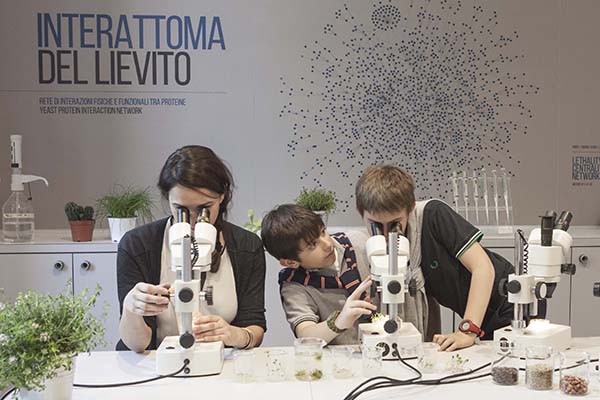 Section of Science for Young People
Section of Science for Young PeopleScience for Young People Section
The museum in Milan places great value on education and has therefore created the 'Science for Young People' section. Here, children and young people can take part in interactive labs and workshops designed to introduce them to science and technology in an engaging way. This hands-on approach encourages curiosity and creative thinking, and makes complex concepts accessible and understandable to a younger audience.
Communications Section
The Communications Section is divided into three areas: astronomy, telecommunications and sound. The astronomy section displays ancient astronomical and topographical instruments, including 17th-century celestial and terrestrial globes and a Foucault pendulum. The telecommunications section highlights the evolution of communications, from telegraphy and telephony to wireless communication and television, with a focus on the technical history of Italian television. The sound section shows the development of sound recording and reproduction technologies from the 19th century to the present day.
Materials Section
The Materials Section covers the life cycle of modern products, from raw material to recycling. Specific sections are dedicated to polymer and synthetic materials, as well as to basic chemistry. A special exhibit is the first electric arc furnace for melting steel, invented in 1898 by Ernesto Stassano, which illustrates the advances in metalworking techniques.
Tickets Museum of Science and Technology
Where is the science museum in Milan Italy?

